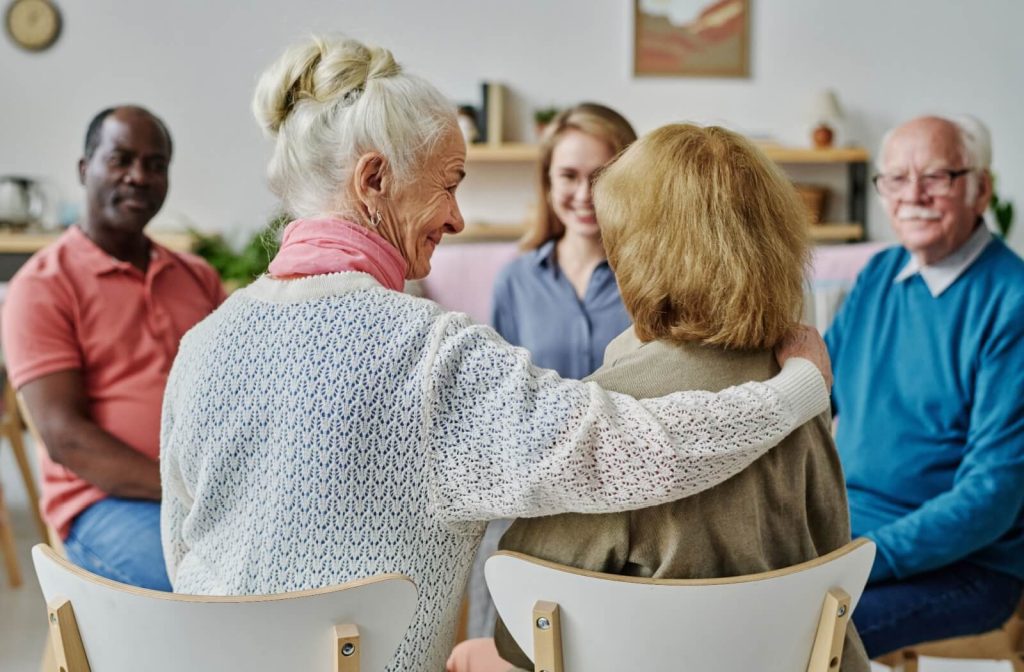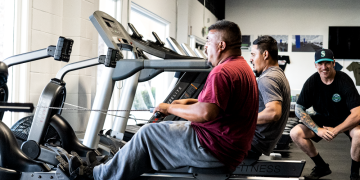Behind many individuals living with chronic illness, disability, or age-related decline stands an unpaid caregiver—someone who, out of love, duty, or necessity, takes on the relentless demands of supporting a loved one. These caregivers are spouses, children, siblings, friends. Their role is often invisible, their labor unrecognized, and their emotional and mental burdens underestimated. While caregiving can be deeply meaningful, it can also be isolating, exhausting, and emotionally complex. As healthcare systems increasingly rely on informal caregivers to fill in the gaps, the need to address their well-being has become critical. One of the most effective, accessible, and human-centered interventions is the caregiver support group—a structured space where individuals navigating similar journeys come together to share, listen, learn, and breathe a little easier.
The Emotional Toll of Caregiving
Caregiving demands not only physical energy but also profound emotional endurance. Whether it’s managing medications, coordinating appointments, dealing with unpredictable behaviors, or simply witnessing a loved one’s decline, the weight is unrelenting. Many caregivers experience anxiety, depression, grief, and chronic stress. They may feel guilt over feeling resentful, shame about needing help, or anger at the situation. These feelings are compounded by societal expectations that caregiving should be natural, selfless, and done without complaint. The result is a heavy emotional load, often carried in silence. Studies have shown that caregivers are at higher risk for health problems themselves, including heart disease, sleep disturbances, and lowered immune function. Mental health support for caregivers isn’t a luxury—it’s a necessity.
Why Support Groups Matter
Support groups create a safe, non-judgmental space where caregivers can release emotional pressure, gain perspective, and connect with others who truly understand. In these settings, participants share stories, express emotions, swap strategies, and validate one another’s experiences. This validation is powerful. Hearing someone say, “I’ve felt that too,” or “You’re not alone,” helps dissolve the shame and isolation that often accompanies caregiving. Support groups also normalize the complex emotions involved—frustration, resentment, sadness, even moments of humor. Beyond emotional relief, groups can be deeply practical. Participants often share tips on navigating insurance, accessing resources, managing difficult behaviors, and finding moments of self-care. Facilitated by a trained professional or peer leader, these groups offer structure while allowing organic connection. The act of simply showing up becomes a radical act of self-compassion.
In-Person vs. Online Support
Support groups exist in various formats, each with distinct benefits. In-person groups, typically held at community centers, hospitals, or religious institutions, offer face-to-face connection, which many find grounding. There’s something profoundly human about gathering in the same room, seeing expressions, sharing physical presence. These groups often become lifelines, especially for caregivers without close friends or family. On the other hand, online support groups have opened up access for caregivers who are homebound, geographically isolated, or juggling intense schedules. Whether on Facebook, Zoom, or specialized forums, these digital communities allow caregivers to check in when it suits them, pose questions anonymously, and connect across vast distances. Online platforms are especially helpful for caregivers in niche situations—such as those caring for a spouse with early-onset Alzheimer’s or a child with a rare condition—who may not find others with shared experiences locally. The key is accessibility. When support is easy to reach, caregivers are more likely to use it.
Peer-Led vs. Professionally Facilitated Groups
Support groups may be peer-led or facilitated by mental health professionals, nurses, or social workers. Peer-led groups emphasize shared experience, offering relatability and grassroots empowerment. In these groups, leadership rotates or is taken up by someone who is also a caregiver, making the dynamic egalitarian and authentic. Conversely, professional facilitators bring clinical expertise, ensure group safety, and guide discussions productively. They can help manage strong emotions, introduce therapeutic tools, and prevent any single voice from dominating. Many caregivers benefit from both formats. For instance, a professional-led group may offer structure and skill-building, while a peer group may provide emotional release and community. Some programs alternate between the two. What matters most is consistency, safety, and a focus on shared humanity.

Caregiving Across Cultures: Tailoring Support
Cultural values significantly shape caregiving norms. In many cultures, caring for elders is seen as a moral obligation or sacred duty. While these beliefs can provide a strong sense of purpose, they can also intensify guilt, reduce the likelihood of seeking help, or lead to family conflicts. For immigrant or minority caregivers, language barriers, stigma, and lack of culturally appropriate services may further isolate them. Support groups that are culturally tailored—offering multilingual facilitation, culturally sensitive topics, or specific religious framing—are essential. For example, a Spanish-language support group may include discussions about navigating healthcare systems as a non-native speaker, while a faith-based group may frame caregiving as spiritual service. Respecting these nuances allows caregivers to open up without having to explain or defend their cultural background. Culturally competent support groups don’t just offer care—they offer dignity.
Supporting the Sandwich Generation
A growing demographic of caregivers are those in their 30s, 40s, and 50s who are simultaneously raising children and caring for aging parents. Dubbed the “sandwich generation,” these individuals face unique stressors—balancing school pick-ups with medical appointments, juggling careers while managing dementia-related crises. Their support groups often emphasize time management, communication with siblings, self-care amidst chaos, and navigating guilt from all directions. Virtual groups are especially popular in this cohort, as schedules leave little room for in-person meetings. These support systems become a lifeline—a space where exhausted parents-turned-caregivers can finally exhale and know they’re not failing, just stretched thin.
Benefits Beyond the Individual
When caregivers are supported, the ripple effects extend to those they care for. Emotionally replenished caregivers are more patient, attentive, and effective. They’re also more likely to seek help when needed, reducing the risk of burnout or breakdown. Support groups help caregivers stay in their roles longer and with less distress, which delays institutionalization for their loved ones. Moreover, these groups strengthen communities by reducing isolation and encouraging mutual aid. In neighborhoods where caregivers know each other, it’s easier to ask for help or offer a listening ear. Some support groups evolve into advocacy circles, campaigning for better caregiver benefits, respite services, or healthcare reform. In this way, support groups are not just about healing individuals—they’re about building resilience and solidarity at the community level.
Creating Inclusive and Sustainable Groups
To create successful caregiver support groups, several factors must align. Accessibility is key—offering sessions at different times, in various formats, and free of charge whenever possible. Outreach through clinics, faith communities, schools, and local media can help caregivers discover the resource. Skilled facilitation is critical, ensuring that groups remain confidential, inclusive, and emotionally safe. Group rules—such as respecting speaking time, avoiding unsolicited advice, and keeping shared stories private—should be clear from the outset. Sustainability also requires funding and leadership continuity. Partnerships with hospitals, nonprofits, and local governments can help with space, materials, and training. Involving caregivers in shaping the group agenda ensures relevance and ownership. Groups that adapt and grow with their members tend to have the most enduring impact.
Personal Testimonies: The Power of Shared Experience
Perhaps the most compelling evidence of a support group’s value comes from caregivers themselves. A woman caring for her husband with Parkinson’s shares that she had felt invisible until she joined a group and heard her own thoughts mirrored in others’ words. A father of a child with autism explains how his group helped him reframe challenges as opportunities for growth. A middle-aged son, previously consumed by guilt, finds relief in knowing others also struggle to balance work, family, and caregiving. These stories highlight not just survival, but transformation. Support groups offer more than coping—they offer renewal.
The Future of Caregiver Support
As the global population ages and chronic illnesses increase, the demand for informal caregivers will only grow. Institutions must recognize the pivotal role caregivers play and invest in their mental health. Support groups—whether online or offline, peer-led or professional—must be integrated into the fabric of health and social care systems. Innovations like hybrid groups, multilingual tele-support, and intergenerational circles can expand reach. Policies that fund and protect caregiver well-being will reinforce the value of this invisible workforce. At the heart of it all lies a simple truth: caregivers care for others, but they need—and deserve—to be cared for too.

















































